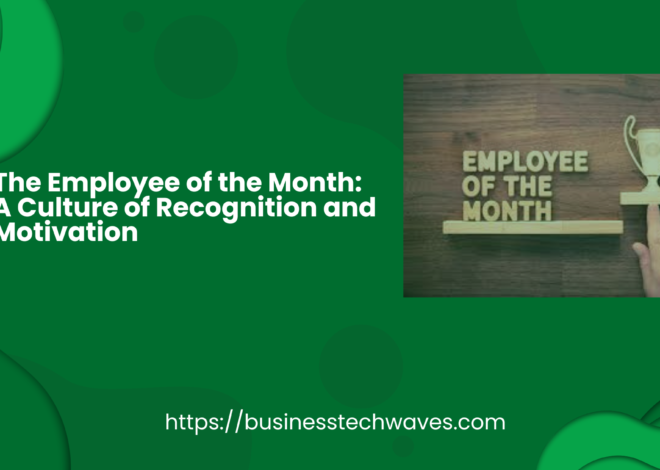
Building a Successful Client Relationship Model in 2024
Introduction
In today’s competitive business environment, maintaining strong client relationships is more critical than ever. Building and sustaining these relationships requires a comprehensive approach that goes beyond simple customer service. Companies must adopt a structured client relationship model that allows them to understand client needs, anticipate future demands, and create long-term partnerships. A robust client relationship model not only enhances customer satisfaction and loyalty but also drives revenue growth and business sustainability. This article explores the key components of a successful client relationship model and offers strategies for businesses to build and maintain effective relationships with their clients.
Understanding the Client Relationship Model
A client relationship model is a strategic framework designed to help businesses manage and improve interactions with their clients. It involves understanding the client’s needs, delivering consistent value, and maintaining ongoing communication to build trust and loyalty. The primary goal is to create a mutually beneficial relationship where both the client and the business feel valued and supported.
The client relationship model typically includes various stages, from initial contact to ongoing relationship management. These stages help businesses identify where a client is in their journey and tailor their approach accordingly. A well-implemented model ensures that each client interaction is meaningful, personalized, and aligned with the client’s expectations and needs.
Key Components of a Client Relationship Model
- Client SegmentationClient segmentation is the process of categorizing clients into different groups based on specific criteria, such as industry, size, purchasing behavior, or value to the business. By segmenting clients, businesses can tailor their approach to meet the unique needs of each group. This targeted approach allows companies to allocate resources more effectively, develop customized solutions, and create personalized marketing strategies that resonate with each segment.Segmentation also helps businesses identify high-value clients who require more attention and resources. By focusing on these key clients, companies can ensure that they receive the highest level of service and support, leading to increased loyalty and long-term partnerships.
- Client Needs AssessmentUnderstanding the needs and expectations of clients is crucial for building strong relationships. A needs assessment involves gathering information about the client’s business, goals, challenges, and preferences. This can be done through surveys, interviews, and regular communication. The insights gained from the needs assessment enable businesses to develop tailored solutions that address specific client needs, enhance client satisfaction, and foster loyalty.Regularly revisiting the needs assessment is essential as client needs may change over time. By staying in tune with these changes, businesses can proactively adjust their strategies and continue to meet the evolving needs of their clients.
- Value Proposition DevelopmentA compelling value proposition is a key element of a successful client relationship model. It communicates the unique benefits and value that a business offers to its clients. The value proposition should be aligned with the client’s needs and demonstrate how the business can help achieve their goals.Developing a strong value proposition requires a deep understanding of the client’s industry, challenges, and objectives. It should highlight the business’s expertise, reliability, and commitment to delivering exceptional service. A well-crafted value proposition not only attracts clients but also reinforces their decision to continue the relationship.
- Client Onboarding and EducationThe onboarding process sets the tone for the client relationship. A smooth and efficient onboarding experience helps clients feel welcomed and valued. It involves introducing clients to the business, its products or services, and the team they will be working with. Clear communication and transparency during this phase build trust and set the foundation for a successful partnership.Client education is also a critical component of the onboarding process. By educating clients about the business’s offerings, processes, and best practices, companies empower clients to make informed decisions and maximize the value they receive. Ongoing education through workshops, webinars, and training sessions further strengthens the relationship and positions the business as a trusted advisor.
- Regular Communication and FeedbackEffective communication is the cornerstone of any successful client relationship. Regular and transparent communication keeps clients informed, engaged, and reassured that their needs are being met. Businesses should establish clear communication channels and frequency based on the client’s preferences.Gathering feedback from clients is equally important. Feedback provides valuable insights into client satisfaction, areas for improvement, and potential opportunities. By actively seeking and acting on feedback, businesses demonstrate their commitment to continuous improvement and client satisfaction.
- Relationship Management and SupportOngoing relationship management is essential for maintaining strong client relationships. This involves regular check-ins, progress reviews, and proactive support. Dedicated account managers or client relationship managers play a crucial role in this aspect by serving as the primary point of contact for clients. They are responsible for understanding the client’s needs, addressing concerns, and ensuring that the client is satisfied with the services provided.Providing exceptional customer support is also vital. Businesses should have a robust support system in place to handle client inquiries, issues, and requests promptly. Timely and effective support not only resolves problems but also reinforces the client’s trust in the business.
- Personalization and CustomizationPersonalization is a key factor in building strong client relationships. By tailoring interactions and offerings to meet the individual needs of clients, businesses create a more relevant and engaging experience. Personalization can involve customizing products or services, providing personalized recommendations, and addressing clients by their names in communications.Advanced technologies such as data analytics and customer relationship management (CRM) systems enable businesses to gather and analyze client data to deliver personalized experiences. By leveraging these tools, businesses can gain deeper insights into client preferences, behavior, and needs, allowing them to create more targeted and effective strategies.
- Trust and TransparencyTrust is the foundation of any successful client relationship. Building trust requires honesty, integrity, and transparency. Businesses should be open and honest in their communications, clearly outlining what clients can expect from their products or services. Transparency in pricing, processes, and policies further reinforces trust and credibility.Delivering on promises and consistently meeting or exceeding client expectations also contributes to building trust. When clients trust a business, they are more likely to continue the relationship, provide referrals, and advocate for the business.
- Measuring Client Satisfaction and SuccessRegularly measuring client satisfaction is essential for understanding the effectiveness of the client relationship model. Businesses can use various methods, such as client satisfaction surveys, Net Promoter Score (NPS), and client reviews, to gauge client satisfaction levels. These metrics provide valuable insights into how clients perceive the business and its offerings.Additionally, measuring the success of client relationships involves tracking key performance indicators (KPIs) such as client retention rate, lifetime value, and client growth. Analyzing these metrics helps businesses identify areas for improvement and make data-driven decisions to enhance client relationships.
- Continuous Improvement and AdaptationA successful client relationship model is not static; it requires continuous improvement and adaptation. Businesses must stay agile and responsive to changes in the market, industry trends, and client needs. By regularly reviewing and updating the client relationship model, companies can ensure that it remains relevant and effective.Continuous improvement involves seeking feedback, learning from past experiences, and implementing best practices. It also requires investing in employee training and development to equip team members with the skills and knowledge needed to deliver exceptional client experiences.
Conclusion
A successful client relationship model is essential for businesses that aim to thrive in today’s competitive market. By understanding and addressing client needs, delivering consistent value, and maintaining ongoing communication, businesses can build strong, long-lasting relationships with their clients. The key components of a client relationship model, including client segmentation, needs assessment, value proposition development, and continuous improvement, provide a comprehensive framework for managing client interactions and fostering loyalty.
By implementing a structured client relationship model, businesses can not only enhance client satisfaction but also drive revenue growth and achieve long-term success. Ultimately, the success of a client relationship model depends on the commitment of the business to prioritize clients, deliver exceptional service, and continuously strive for improvement.


